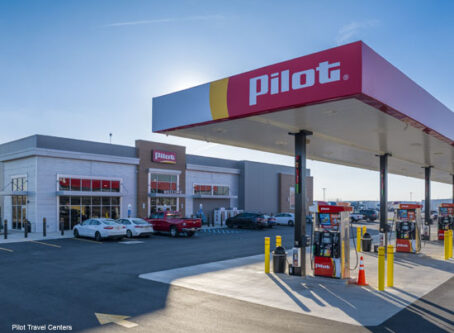Meet Volvo’s Vera – She’s kind of cute
If you want to see what a truly driverless truck looks like, check out Vera.
Vera was developed by Volvo Trucks in Sweden, and it couldn’t be more driverless. There is no cab, and there are no manual controls. Vera consists of an electric motor and drivetrain on four wheels. That’s it. A driver could only ride it like a surfboard. But then, of course, he or she would be a dude, not a driver.
According to Volvo’s announcement, Vera’s “propulsion is entirely electric with zero exhaust emissions and low noise levels.”
The driveline and battery pack are of the same type that are used in Volvo Trucks’ electric trucks.
With Vera, Volvo moves incrementally toward an era of driverless trucks in widespread use. Though that’s a long way off, Vera is a distinct – not to mention distinctive – step in that direction. But Volvo wants everyone to understand their limited intentions for Vera.

She may be cute in a curious way, but one look tells you Vera is not built for speed with a trailer attached. In fact, Volvo says Vera “is intended to be used for regular and repetitive tasks characterized by relatively short distances, large volumes of goods, and high delivery precision.”
What does that mean? Volvo answers in generalities, but I’m going to take a guess. It seems custom designed for port facilities. Growing ports around the world need staging and storage areas away from the crowded piers. Vera could continuously move containers back and forth from piers to staging areas along dedicated roadways.
There’s a clue in Volvo’s limited announcement. Vera is not referred to as a single entity, but as a concept called “new transport solution.” Volvo is developing a cloud-based control center to monitor and direct a team of Veras working together. If you’ve ever seen yard jockeys lined up to receive containers from a huge crane, it’s easy to imagine a line of Veras doing just that.

And here’s another clue. Vera has a fifth wheel but no visible way to crank up trailer landing gear. She is not built for a heavy drop-and-hook operation – at least not without human help. But that’s no issue if Vera stays hooked to a single container chassis.
The future peeks through the particulars of Vera’s intended use, whatever that really is. There’s the driverless part, of course. There’s also that cloud-based control center. According to Volvo, Veras “are designed to locate their current position to within centimeters, monitor in detail and analyze what is happening with other road users, and then respond with high accuracy.”
It seems that if her looks don’t scare people to death (she puts you in mind of a headless horseman), that or a heavier version of her could do just fine on the interstates.
The phrase “position within centimeters” is striking. That would be important in an open port area not necessarily marked with the kind of visual clues autonomous trucks normally need to stay on course. In port operations, Vera would need to find its way around on unmarked pavement. It would also need to place itself accurately for cranes to quickly load and unload containers. But there are broader implications here.
That kind of precision will also be essential for driverless trucks to be practical on public highways. With it, a truck will know where it is “within centimeters.” The truck will also know where the road is with the same precision using digital maps. Without it, autonomous trucks will have to sit out weather events.
Volvo’s announcement says this system is for “companies that need continuous transport services between fixed hubs.” Looking ahead a decade or two, those hubs might be along specific stretches of interstate digitally mapped for ongoing operations. Those operations could be around the clock in any weather – exactly what real carriers will need to invest in truly driverless trucks.









